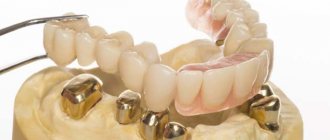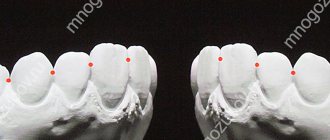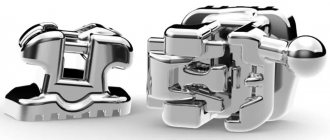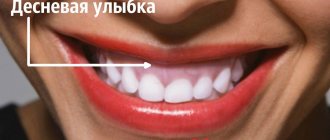The most important difference between the smiles of men and women is the very essence of the smile. We women smile according to our mood because we feel good. A man’s smile, first of all, means that he is in control of the situation and is in complete control of himself. Therefore, do not be especially deluded when the man next to you squints like a Cheshire cat.
On the contrary, excessive smiling speaks more of inflated self-esteem and self-satisfaction.
Such people, however, need approval for their actions. If you wish, you can take advantage of this male thorn and turn the situation around for yourself. If you praise and assent to such a man, soon he will not be able to live without you, and criticism, on the contrary, will almost completely lead to the severance of all relationships.
It is also useful to know that:
- about the most “dangerous” smile.
Be very careful with a person whose eyes widen when he smiles without blinking. This is nothing more than a clear threat, a danger. Defuse the situation in any way - go to the ladies' room, knock back a glass of wine, "answer" an imaginary phone call, or make an "urgent" call yourself. As a last resort, grab your stomach and complain about “unexplained blood in the morning” - this will knock any man out, he no longer remembers what he was talking about a minute ago.
All of these, of course, are extremes, and you shouldn’t dwell on them, otherwise you will begin to suspect everyone and everything. Here's how to make sure your man is okay:
A smile will make everyone brighter, even if it is asymmetrical!
Tweet
Good afternoon
Today will be an unusual topic for many. Asymmetrical smile and what is attributed to it...
A sign of neuroticism, falsehood, crooked teeth or jaw, excessive sarcasm - this is what is most often attributed to people whose smile is asymmetrical. Is it so?
In fact, there is never complete symmetry in nature, and, as a rule, a person has one leg longer, one eye slightly larger, and a smile slightly shifted to one side. However, this “slightly” in most cases is not noticeable and becomes noticeable only upon closer examination.
Crooked teeth or jaws cause oral asymmetry, as do some muscle or nerve diseases, but these are physical nuances, and in this material we will focus on the psychological properties of an asymmetrical smile. Why do some people “squint” in one direction or another when they smile?
Many experts in the field of gesture and movement psychology, including the famous Paul Ekman, say that a fake smile is often asymmetrical. An ironic or sarcastic smile is often asymmetrical. This is all true, but not every person who smiles “unevenly” is lying to you. If people, whose even the most sincere and friendly smile is “shifted” only to one side (which, by the way, psychologists talk about, don’t judge by just one gesture, consider the behavior as a whole).
Some psychologists explain the asymmetry of a smile by the fact that one hemisphere reacts more emotionally and more vividly to what is happening than the other. Therefore, of those who “mow”, many “mow” to the left - the right hemisphere is generally more emotional (remember that the right hemisphere is responsible for the left side of the body, and vice versa, therefore in right-handed people the left hemisphere is more active). However, here is the time to remember the mentioned neuroticism - the fact that the hemispheres work so differently can cause other psychological disruptions that can lead to neuroses, and those to somatic or psychosomatic diseases. However, if you have an asymmetrical smile, you shouldn’t become a hypochondriac - this is just a general theory. After all, many children are born with asymmetry, or we are forced to wear plates for a long time.
Another reason is your subconscious reluctance to open up completely; you are always on guard, looking at the world through a visor. By the way, this same trait is associated with “accusations” that those with an asymmetrical smile are too ironic and even sarcastic. This is one of the methods of psychological defense - “translating” the arrows, banter, sometimes malicious.
But it is not all that bad. Owners of an asymmetrical smile are credited with more logical and rational thinking or, conversely, the ability to invent, imaginative thinking (depending on which hemisphere is more developed).
Be that as it may, an unnatural asymmetrical smile looks crooked and forced, but a natural one, even if it is asymmetrical, is beautiful and attracts people just as much as an “even” one. There is an opinion that, if you practice, you can, in principle, even out such a smile, although there is also a theory that asymmetry gives charm to its owners and owners.
Everything is relative, it is important to carry Love within yourself and look at the world through the prism of new times. Smile, there is always a reason to smile, because a smile charges us and guides us at the right moment in time!
Did you like the article? Click like below or go to the main page of the website “Live with Pleasure!”
Physiognomy: what the mouth, lips and smile tell us about
The mouth, lips and smile indicate the level of restraint of a person, and together they also serve as an indicator of sincerity. For example, physiognomists associate lips with a person’s emotionality. And the fuller the lips, the more sensual and emotional the person is. Women accentuate their lips to create an accent for the opposite sex. We will look at the size and shape of the lips.
Full lips, with both lips plump and wide. They indicate emotionality, expressiveness and a developed sense of humor. Angelina Jolie has exactly these lips.
At the same time, convex full lips indicate success in life.
Thick lips speak of extravagance, squandering, and touchiness. Such people love to drink and sit in good company.
Large lips with a drooping thick lower lip speak of a person’s greed, capriciousness and frivolity.
If the lower lip is full, this is a sign of practicality; such a person knows how to persuade. If the upper lip is very thin, the person is used to working at the expense of his personal life. This is often a sign of selfishness.
If the upper lip is fuller than the lower, then this indicates straightforwardness, a desire to always get to the bottom of the truth, and sometimes curiosity.
If the upper lip protrudes slightly, this is a sign of intelligence, caution, straightforwardness of character, but often also vanity.
A strongly protruding upper lip indicates indecision.
Thin lips speak of intelligence, restraint, coldness and prudence. Such a person does not trust flattery, does not demonstrate his feelings to others, is practical, cautious, and sometimes withdrawn.
Very thin lips can indicate cruelty.
A “pressed” mouth with thin lips indicates a tendency towards hypocrisy and envy.
A “sinking” mouth is a sign of prudence.
A mouth with long, pointed, thin lips indicates cowardice.
Small lips speak of intelligence, prudence and foresight.
If the upper lip is shaped like a cupid's bow, this indicates the owner's determination. Such a person will always achieve his goal.
If one corner of the mouth is always higher than the other, this is a sign of a deceiver.
A hard mouth with corners tending downwards speaks of a strong-willed, stubborn person.
If your mouth constantly twitches, then this is a sign of nervousness and excitement.
A mouth slanted to one side indicates a nervous person prone to sarcasm.
Moreover, if the mouth is slanted to one side towards the bottom, this is a sign of inconstancy and stubbornness.
A smile can tell us very interesting information.
Natural smile: wide, lips relaxed, teeth exposed, but you can’t see the gums. This person does not flaunt his feelings, but does not hide them either. He is happy with the situation, everything is in order, everything is harmonious.
A smile with bare gums speaks of a person’s generosity, sometimes of excessive trust in the interlocutor.
When smiling, the upper lip stretches over the teeth. This is read as false sincerity, the person is hiding something. This is how shop assistants often smile, a learned smile.
If a person does not show his teeth when smiling, they are closed. This is the desire to maintain distance and not open up. This is just a courtesy. The person is not yet ready to make close contact.
A crooked smile—one corner of the mouth is higher than the other. This is a smile for show, a desire to make a good impression, but such a person does not show true feelings at the moment.
As we can see, the mouth, lips and smile can say a lot. Be careful when communicating, read facial features and indicators, and we wish you successful practice in this!
08/29/2016Vadim Sokolov
Related Posts
- How to recognize lies by rhetorical signs10/13/2016
- Physiognomy: reading a person by the shape of his eyes09/16/2016
- Gestures and postures in negotiations09/08/2016
Popular Posts
- Transactional analysis in negotiations12/11/2016
- Brainstorming using the Walt Disney method to prepare for negotiations02/27/2017
- Negotiation Approach #1: Negotiation is about getting people to do what we want 06/30/2016
Smile as a diagnosis
And for those who didn’t have time for the broadcast, we choose the most interesting topics.
When it can become a symptom of serious diseases.
Stroke
What's on the face: a crooked smile - one corner of the mouth rises, and the other is motionless and even down.
Why it’s dangerous: facial asymmetry is a symptom of a stroke. During a stroke, one half of the face functions normally, but the other becomes immobile. If you suspect that a person has had a stroke, ask him to smile - this will allow you to quickly make a diagnosis and seek medical help in time.
In addition, the following may indicate that a person is having a stroke:
- loss of mobility of one arm - when a stroke develops, the muscle tone in one half of the body becomes so weak that the person cannot raise his arm;
- slurred speech coupled with facial asymmetry and loss of mobility in one arm.
What to do: If you suspect a person is having a stroke, ask them to say a phrase. If you hear unintelligible speech in response (“word salad”), urgently take the person to the hospital.
The clock is counting!
Parkinson's disease
What's on the face: a frozen mask - no sadness, no joy, zero emotions.
Why it's dangerous: a mask-like face is a symptom of Parkinson's disease. Parkinson's disease (shaking palsy) develops due to the death of nerve cells located in a small area of the brain - the substantia nigra. The death of these cells leads to a decrease in the amount of dopamine (transmits impulses for normal movements), disruption of normal nerve impulse transmission and the appearance of symptoms of Parkinson's disease, one of which is a mask-like face. In addition, stiffness in the legs when walking may indicate the presence of Parkinson's disease.
What to do: consult a doctor. He will prescribe drugs that increase dopamine levels. Parkinson's disease cannot be completely cured, but in modern conditions it can be controlled and the patient's quality of life can be improved.
Horner's syndrome
What's on the face: drooping eyelid on one side, the eyeball on this side is slightly sunken, and the pupil is narrow.
What is dangerous: unilateral ptosis (as drooping eyelids are called) can be a symptom of Horner's syndrome. Horner's syndrome is a complex multi-stage lesion of the oculomotor nerve, the manifestation of which is ptosis, a narrow pupil and the absence of tears. Horner's syndrome may be caused by a tumor in the upper lobe of the lung (Pancoast tumor).
What to do: An eye and lung examination is required.
About food
3 super soups
Which first courses are especially healthy?
1. Broccoli soup
Broccoli contains sulforaphane, a substance that protects against breast and colorectal cancer. Sulforaphane is not destroyed during heat treatment of broccoli.
The daily dose of broccoli soup is 150 g.
2. Tomato soup
Red tomatoes contain lycopene, a substance that protects men from prostate cancer. Heat treatment of tomatoes increases the amount of lycopene they contain. The daily dose of tomato soup is 200 g.
3. Pumpkin soup
Pumpkin contains beta-carotene (a precursor to vitamin A). Beta-carotene, once in the human body, is converted into vitamin A, which is involved in the synthesis of rhodopsin, the visual pigment of the retina. Vitamin A deficiency leads to impaired color perception and twilight vision.
The daily dose of pumpkin soup is 200 g.
Watch “Live Healthy!” from Mon. on Friday at 9.45 on Channel One.
How to order services from the Ort-Artel clinic
Ort-Artel Dental Clinic is a Center for Comprehensive Dentistry, which uses a holistic approach to each patient in its work.
How is a holistic approach to treatment different? He assumes that the doctor knows how to identify cause-and-effect relationships in human physiology, and therefore treats not the symptoms of the disease, but its main cause. In dentistry, this approach makes the process of treating a patient more difficult for the doctor, but the result obtained is highly effective.
Location
The clinic is located at: Moscow, Mira Avenue, 75, building 1.
If you get there by metro, you need to get off at Rizhskaya station and after a 3-minute walk you will be at the door of the organization.
If you come to the clinic by car, then the definite advantages include the presence of your own free parking lot. The entrance to it is on the street. Trifonovskaya, the gate is located next to the pub. To be able to enter the parking lot, just call the security numbers listed on the official website.
Opening hours and contact methods
"Ort-Artel" is open from 9.00 to 21.00 daily. To make an appointment, just call the clinic at +7 (495) 128-11-74.
Or write by email, Viber or telegram network. Our managers will promptly respond to your message, and if there is such a need, they will forward your question to specialists.
You can also make an appointment by filling out a simple feedback form on the website https://www.ort-art.ru or order a call back by indicating a phone number. Our manager will immediately call you and answer all your questions, in addition, will help you decide on the choice of a specialist and his work schedule.
Our approach to treatment is based on the attention of the medical staff and their care for patients.
#7 Eat, Laugh, Love - Confidently: Smiling Styles
1. Spike (commissural) style
, it is possessed by more than half of the population. It is characterized by raising the corners of the mouth upward and to the sides, following the levator muscle of the upper lip, ending with the exposure of the upper teeth. The lower edge of the smile runs along the incisal edge of the upper central incisors. People with a commissure smile style: Frank Sinatra, Jennifer Aniston, Jamie Lee Curtis, Audrey Hepburn.
2. Canine style (“lip bend”)
occurs in a third of the population.
The shape of the lips when smiling resembles a diamond. Characterized by the display of fangs, then the corners of the mouth rise up and stretch to the sides. Often the corners of the mouth remain below the maxillary canines. A smile like this on a woman’s face is considered the most attractive. The canine style also has a more poetic name - “gull wing”. People with this style of smile: Elvis Presley, Tom Cruise, Drew Barrymore, Sharon Stone, Linda Evangelista. 3. Mixed style
, it is possessed by 2% of the population. The shape of the lips when smiling looks like two parallel chevrons. The levator labii superioris and anguli oris and the depressor labii inferioris muscles work simultaneously to expose both the upper and lower teeth. The shape of the lips is usually illustrated as two parallel red stripes. People with mixed smile styles: Julia Roberts, Marilyn Monroe, Will Smith, Oprah Winfrey. Often the shape of a smile can be determined by a habit or the location of the hard tissues of the oral cavity. Smile restoration can help the patient overcome long-standing problems and also increase attractiveness.
There are 4 stages of the smile cycle:
I. Lips are closed. II. Half-smile (lips are relaxed, but the corners of the mouth are slightly raised up). III. Natural smile. IV. Wide (full) smile. Of course, the types of smiles vary and are unique to each person. If the smile is not wide, you can limit yourself to restoring the front of the six upper teeth. If stage 4 is present, then recovery should be appropriate. Varieties There are 5 variations in the external characteristics of a smile, which depend on the presence of hard and soft tissues in the “smile zone”
Type 1. Only the upper teeth (or part of them) are visible. View 2. The upper teeth and more than 3 mm of gums are visible. View 3. Only the lower teeth (or part of them) are visible. View 4: Both upper and lower teeth are visible. View 5. Neither the upper nor the lower teeth are visible. In most cases, a person falls strictly into one of these varieties, however, if necessary, types can be combined. For example, a patient may have a mixed smile in which both the upper and lower teeth are visible, as well as more than 3 mm of gum tissue. This unusual style of smile corresponds to both the 2nd and 4th types. Smile Classification System The above categories can be combined to create a structure that objectively describes the different types of smiles. Style, stage and appearance together provide a complete, easy and concise description. This classification is useful for both the dentist and the patient. For example, the most common smile has the following code: commissure (style 1), stage III, type 1. And although “smile therapy” is still in its infancy, society is already demanding dentists not just treat teeth, but turn them around. attention to the appearance of each individual patient. The smile classification scheme presented in the article can help when the patient and dentist discuss variations of further aesthetic treatment. Let's take a closer look at what this or that type of smile reveals to the eye. The shape and color of teeth is an important image component of the beauty and attractiveness of the face. It is noticed that the teeth of every person correspond to the face. If the face shape is oval, then the shape of the teeth is most often oval. A triangular or square face is “attached” with teeth corresponding in shape. Yellow color or pigment spots on teeth cause great harm to aesthetics. Fluorosis, caused by an increased fluoride content in water, often leads to the appearance of stains. The process goes under the enamel, and removing these stains is quite difficult. In this case, remineralization therapy is carried out, but more often the outer layer of teeth is replaced with veneers or crowns. Many people believe that the distal chewing groups of teeth are not necessary in life, because you can train yourself not to smile openly. In this case, you need to constantly monitor how the face looks, which limits openness, communication opportunities and harms the entire dental system. After all, when there is no chewing group, the frontal, visible group of teeth bears an increased load. This entails its loss, because it is adapted to perform a biting rather than a chewing function. Of course, aesthetics can be restored using various types of prosthetics, and we talked about this in previous issues of our newspaper.
Manufacturing of prostheses
is a great art associated with the enormous limitations that exist in the oral cavity: the presence of a certain number of teeth, the height, width and thickness of each tooth, its correspondence to its anatomical shape, its position and color, its closure with antagonist teeth, its location in relation to to the muscles of the lips. The dentofacial system is so balanced and precise that an overestimation of the distal part of the chewing group of teeth by literally 0.01 mm makes it impossible to close the teeth in the frontal area by up to half a centimeter. If you put a crown on the 7th tooth, and it will overestimate it by 0.01 mm, then in the frontal area the patient’s mouth may not close as thick as a cigarette, which he will not be able to hold between his teeth. At the same time, there are a huge number of aspects when the lack of understanding of the patients themselves interferes with a better result. Not quite imagining what will come of this, some try to influence the doctor and make their teeth lighter or smaller or larger. This can lead to a result that says artificial teeth. And when it is clear that the teeth are artificial, we can conclude that the professional quality of the prosthetics is very low. And, unfortunately, this situation still prevails in our country.
Why do we smile?
Let's go back to 2021. Today, smiles are all around us - in the form of smiley faces, refrigerator magnets, advertisements, and even well-meaning strangers. Those who smile frequently are considered more likable, competent, approachable, friendly and attractive.
But the truth is much more sinister. Of the 19 different types of smiles, only 6 are associated with a truly good smile. The rest happen when we are hurt, uncomfortable, scared, sad or embarrassed. A smile can mean contempt, anger or mistrust, a lie or loss.
Of the 19 different types of smiles, only 6 are associated with a truly good smile.
While our genuine, happy smiles exist as a reward for having done something positive to support our existence, unhappy smiles have less to do with what you're experiencing internally and more to do with what you want to signal to others. “Some smiles have evolved to signal that we are cooperative and non-threatening; others have evolved to let people know, without aggression, that we are superior to them in our current situation,” says Paula Niedenthal, a psychologist at the University of Wisconsin-Madison.
Many of them are polite gestures that show that we are following the rules. But they can also be an effective way of manipulating others or distracting them from our true feelings. Most often, this universal symbol of happiness is used as a mask.











